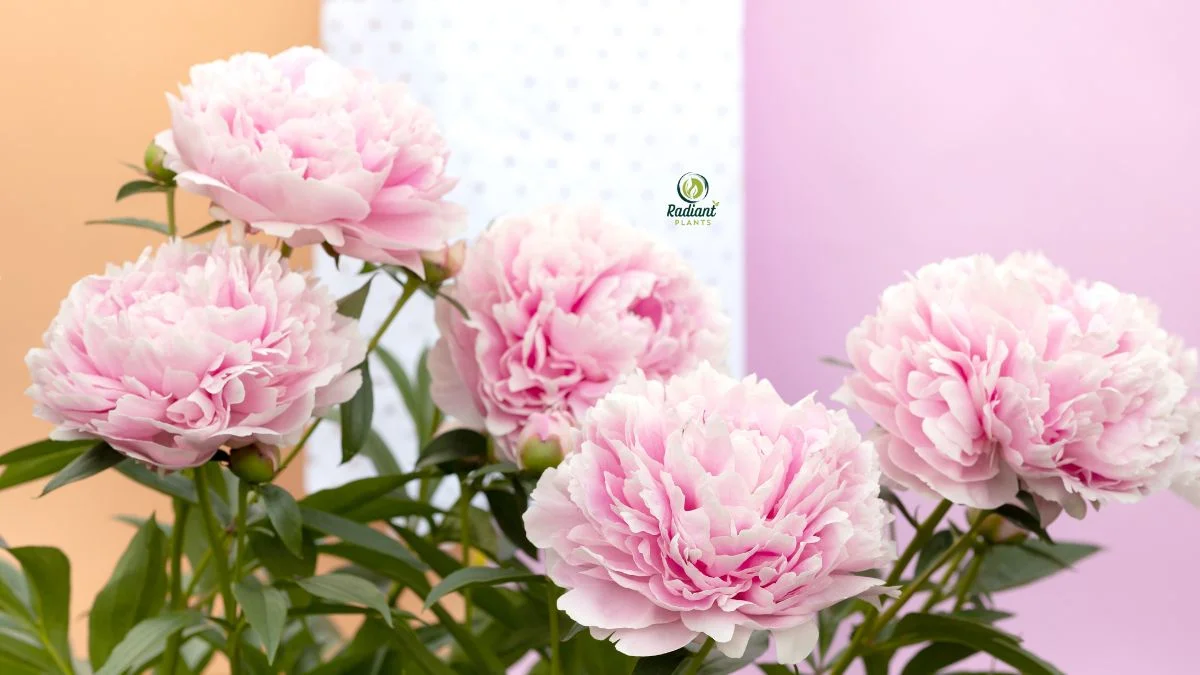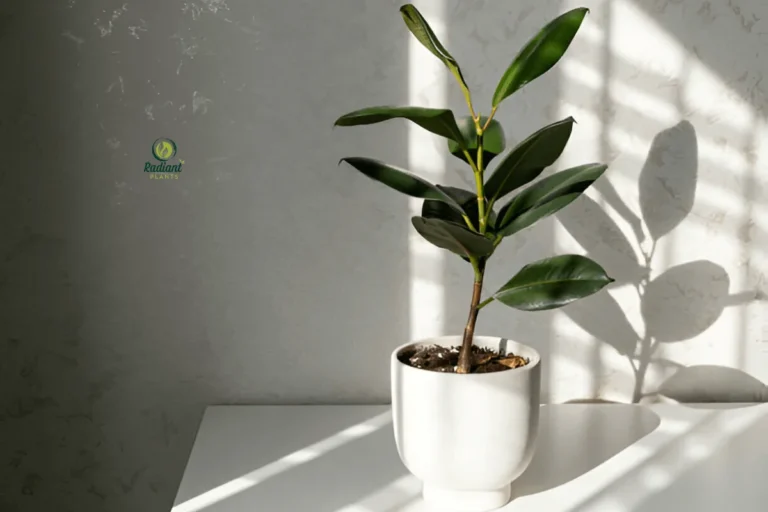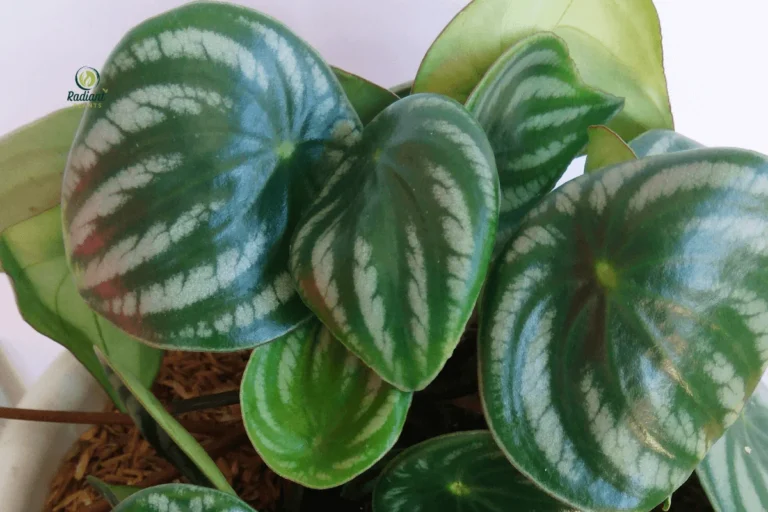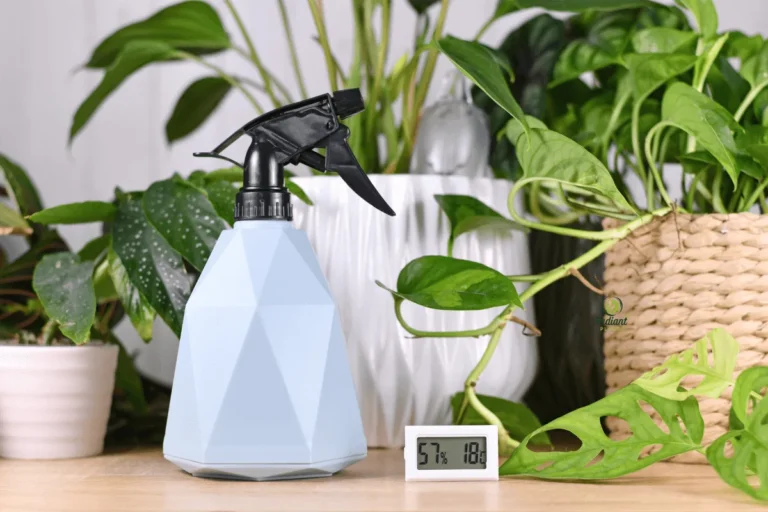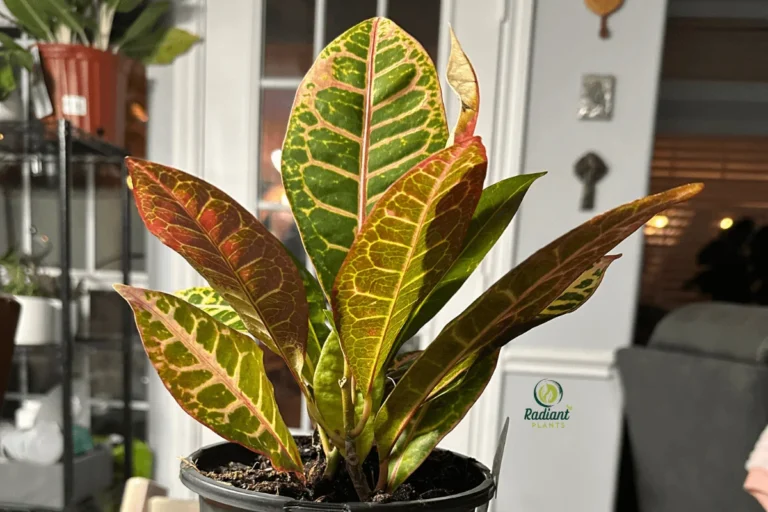Peony Plant Sarah Bernhardt: How to Grow It Best
If you want a showstopping bloom that delivers romance, fragrance, and old-world charm in one plant, the Peony Plant Sarah Bernhardt is the one gardeners return to year after year. And the best part? Growing it successfully is easier than most people think—once you understand a few essentials that make this heirloom variety thrive.
This iconic peony has been adored for more than a century, thanks to its lush, double pink petals and perfume-like scent that floats through the garden in late spring. But to get those big, dreamy blooms, you’ll need to plant and care for it the right way—especially when it comes to sunlight, soil, and planting depth.
In this guide, you’ll learn exactly how to grow Sarah Bernhardt peonies at their best: where to plant them, how deep to set the roots, how to support those heavy blossoms, and what to do each season to keep them healthy for decades. We’ll also walk through common mistakes to avoid, how long they take to bloom, and answer the questions gardeners ask most.
Table of Contents
Table of Contents
What Makes the Peony Plant Sarah Bernhardt So Special?
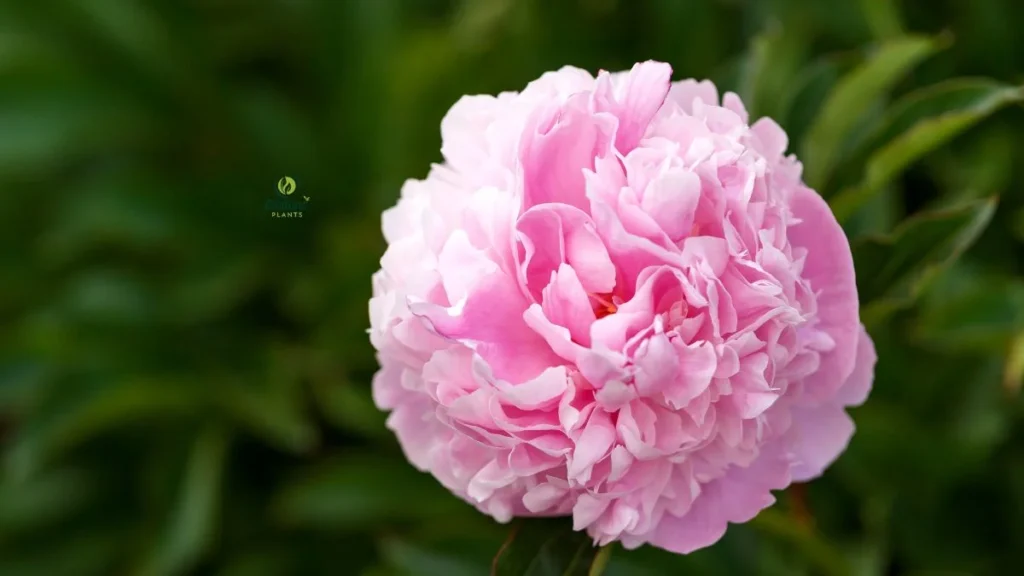
The Peony Plant Sarah Bernhardt stands out as one of the most cherished and recognizable pink peonies in the gardening world. Introduced in 1906 and named after the iconic French actress Sarah Bernhardt, this heirloom peony has remained a beloved favorite for more than a century. Its lasting popularity speaks to the plant’s exceptional beauty, fragrance, and dependable performance—qualities that make the Peony Plant Sarah Bernhardt a must-have for any garden.
What truly sets this variety apart is its lush, full double blooms. Each flower is packed with layers of ruffled petals in soft blush and shell-pink tones. As the blossoms open, the petals subtly fade, creating a romantic, watercolor-like effect. The Peony Plant Sarah Bernhardt is also famous for its sweet, rosy fragrance, which can perfume an entire border during late spring.
Cut-flower lovers especially appreciate this plant. The blooms of the Peony Plant Sarah Bernhardt last 7–10 days in a vase when harvested at the soft-bud stage. With large 6–8 inch flowers, excellent vase life, and a timeless pink color palette, it’s one of the top peony choices for bouquets.
This peony thrives in USDA Zones 3–8 and performs beautifully in cottage gardens, formal beds, and mixed borders. Whether planted as a single specimen or massed along a walkway, the Peony Plant Sarah Bernhardt delivers unmatched charm and reliability.
If you’re exploring more ornamental beauties to pair with this classic, visit our Stunning Ornamental Plants collection or check out Flowering Peony Plants: 7 Stunning Varieties to Grow at Home for complementary ideas.
How to Plant Sarah Bernhardt Peonies the Right Way
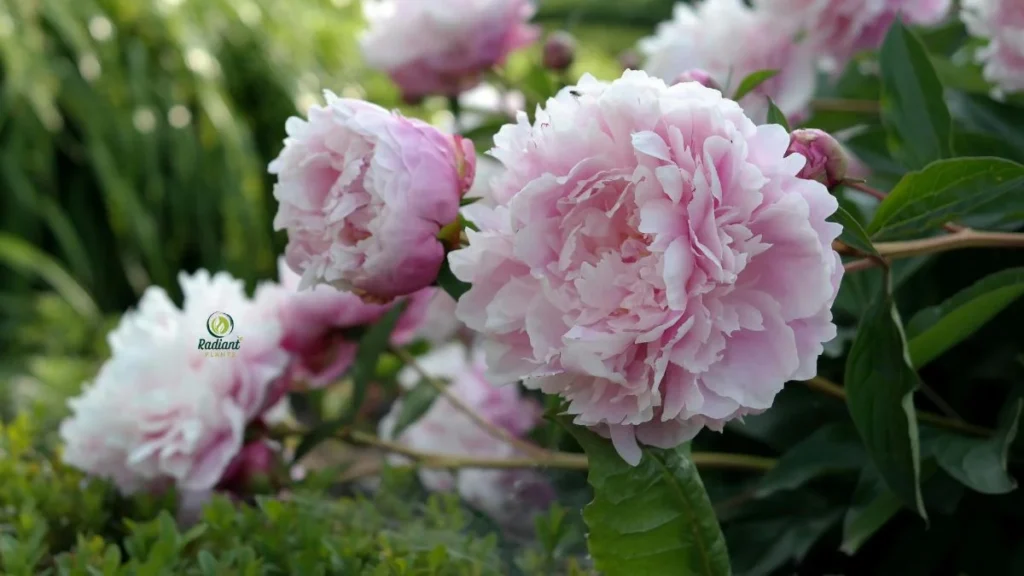
Planting the Peony Plant Sarah Bernhardt the right way is essential if you want those iconic, full, ruffled blooms year after year. Although this variety is known for being a long-lived and resilient perennial, it responds best to proper placement, soil health, and correct planting depth. A few thoughtful steps during planting can determine whether your Peony Plant Sarah Bernhardt thrives or struggles to bloom.
Best Location – Where Should You Not Plant Peonies?
Choosing the right location is critical. The Peony Plant Sarah Bernhardt does not perform well in deep shade, so avoid areas without strong sunlight. Aim for 6 or more hours of direct sun every day to support sturdy stems and abundant flowers.
You should also keep this peony away from soggy, compacted, or low-lying spots. Poor drainage often leads to rot, botrytis, and other fungal issues—some of the most common reasons peonies fail to bloom. If your garden has heavy soil, planting the Peony Plant Sarah Bernhardt in a raised bed is an excellent solution.
Finally, avoid planting too close to large shrubs or trees. These woody plants compete for nutrients and moisture, which can stunt growth and reduce flowering potential.
Correct Planting Depth (Critical for Blooming)
Planting depth makes or breaks peony performance. The eyes—or buds—of the Peony Plant Sarah Bernhardt should sit just 1–2 inches below the soil surface. If planted deeper, the plant may produce foliage but no blooms. Lay the roots horizontally, cover lightly with soil, and water well to settle everything in place. If planting in the fall, marking the spot helps you track where growth will emerge in the spring.
Soil, Spacing & Light Requirements
The Peony Plant Sarah Bernhardt grows best in loamy, well-draining soil with a pH of 6.5–7.0. If your soil is clay-heavy, mixing in compost improves texture and drainage. Give each plant 3–4 feet of space for airflow and disease prevention, and ensure full sun exposure to support those signature, oversized double blooms.
For more planting guidance, explore our Plant Care Tips category, or visit Root Rot Treatment: 7 Proven Ways to Stop the Spread if drainage challenges have affected your garden.
Sarah Bernhardt Peony Care Guide
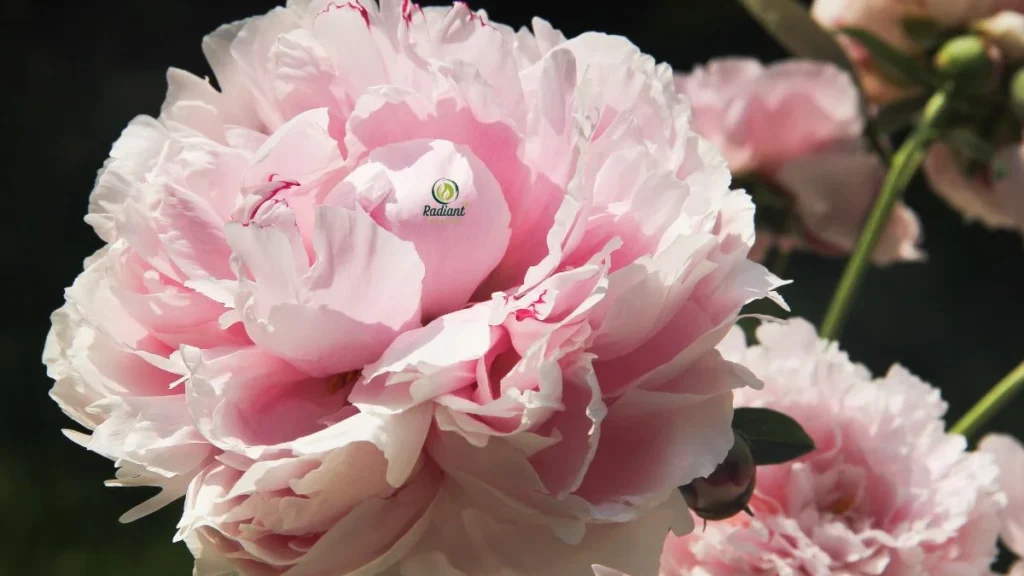
Caring for the Peony Plant Sarah Bernhardt is easier than most gardeners expect. Once you understand what this beloved perennial needs throughout the growing season, it becomes one of the most rewarding plants in the garden. With the right watering routine, proper support, and thoughtful seasonal care, the Peony Plant Sarah Bernhardt will deliver lush, fragrant blooms that return stronger every year.
Watering & Fertilizing
Watering the Peony Plant Sarah Bernhardt correctly is essential for strong roots and abundant flowering. Deep, infrequent watering works best—soak the soil once a week during dry weather, allowing moisture to reach 8–12 inches deep. Avoid shallow watering, which causes weak root systems and floppy stems, especially in large double-flowered varieties like this one.
For fertilizing, apply a balanced, slow-release formula in early spring as new shoots begin to emerge. Skip high-nitrogen fertilizers; they encourage leafy growth at the expense of blooms. A thin ring of compost around the base of your Peony Plant Sarah Bernhardt, improves soil texture and boosts nutrients naturally.
Staking & Supporting Heavy Blooms
Because the Peony Plant Sarah Bernhardt produces large, luxurious double blooms, proper support is essential. Install peony supports in early spring before stems reach 6–8 inches tall. Grid rings, peony hoops, or bamboo stakes tied with soft twine keep stems upright, enhance airflow, and help prevent fungal issues after rain or wind.
Seasonal Care (Spring, Summer, Fall, Winter)
In spring, add a light layer of mulch—kept a few inches from the crown—to help regulate soil temperature. In summer, deadhead spent blooms to encourage the plant to redirect energy back into root strength.
Fall care is crucial for disease prevention. Cut stems back to ground level after frost and discard the debris rather than composting it, as peony foliage can harbor fungal spores. During winter, the Peony Plant Sarah Bernhardt needs little protection unless temperatures drop well below zone recommendations.
For help diagnosing common issues, visit How to Get Rid of Aphids: 5 Mistakes to Avoid, or check Root Rot Treatment: 7 Proven Ways to Stop the Spread if drainage concerns are affecting your plant’s health.
Are Sarah Bernhardt Peonies Easy to Grow?
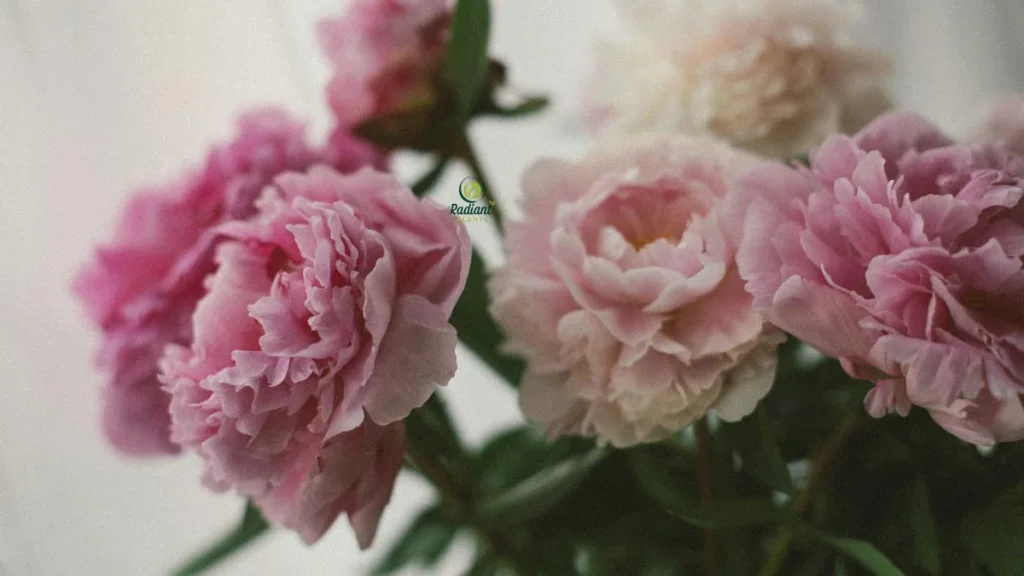
If you’re wondering whether the Peony Plant Sarah Bernhardt is easy to grow, the answer is a confident yes—provided you follow a few key basics. This classic variety is renowned for being hardy, long-lived, and low-maintenance once established. Many gardeners report their Peony Plant Sarah Bernhardt thriving for 50+ years with minimal care, making it one of the most beginner-friendly peonies for home gardens.
Why They’re Easy — When Planted Correctly
Most challenges with the Peony Plant Sarah Bernhardt stem from three common mistakes: planting too deeply, giving it insufficient sunlight, or placing it in poorly draining soil. Correcting these fundamentals from the start ensures healthy growth and reliable blooms.
- Planting Depth: The eyes should sit just 1–2 inches below the soil surface. Buried deeper, and your Peony Plant Sarah Bernhardt, may not bloom for several years.
- Sunlight: At least 6 hours of direct sunlight are essential for strong stems and abundant flowers.
- Soil Quality: Well-draining, fertile soil prevents root issues and supports quick establishment for young plants.
Setting Realistic Expectations for the First 1–3 Years
Even though the Peony Plant Sarah Bernhardt is low-maintenance, it requires patience. Year one focuses on root development, so blooms may be minimal or absent. By the second year, foliage strengthens and small flowers may appear. By year three, most plants reach full maturity, producing the lush, full, fragrant blooms this variety is celebrated for.
This slow start is normal—it lays the foundation for decades of reliable performance, ensuring your Peony Plant Sarah Bernhardt rewards your garden with beauty for years to come.
How Long Do Sarah Bernhardt Peonies Last?

One of the most remarkable traits of the Peony Plant Sarah Bernhardt, is its incredible longevity. Unlike many flowering plants that require frequent replacement, a well-established Peony Plant Sarah Bernhardt can thrive for 50 years or more, making it a true garden investment. With proper care, you’re not just planting a flower—you’re cultivating a perennial classic that can grace your garden for decades.
Bloom Period and Flower Longevity
The Peony Plant Sarah Bernhardt typically blooms in late spring, with flowers lasting 7–10 days. While each bloom is relatively short-lived, the plant produces multiple buds throughout its flowering season, giving successive waves of lush, pink blooms. Deadheading spent flowers helps extend the display by redirecting energy into remaining buds rather than seed production.
Vase Life for Cut Flowers
For those who enjoy indoor arrangements, the Peony Plant Sarah Bernhardt is a top choice. Cut blooms can last 7–10 days in a vase when stems are trimmed at an angle, excess foliage is removed, and water is refreshed regularly. Their large, fragrant petals make them ideal for spring bouquets or as eye-catching centerpieces.
With the right planting, sunlight, and seasonal care, the blooming period of the Peony Plant Sarah Bernhardt may feel brief, but the plant’s long lifespan ensures decades of stunning garden displays. By understanding bloom duration and practicing timely deadheading, you can enjoy both thriving garden beds and lasting floral arrangements indoors.
How Big Does a Sarah Bernhardt Peony Get?
Understanding the size of the Peony Plant Sarah Bernhardt, is essential for garden planning and ensuring your plants thrive. This classic perennial typically grows to a height of 2.5–3 feet, with sturdy stems capable of supporting its signature full double pink blooms. While strong, these stems still benefit from proper spacing and occasional staking to prevent drooping under the weight of the flowers.
In terms of spread, a mature Peony Plant Sarah Bernhardt reaches about 3 feet across. This generous width creates a lush, full appearance in borders, cottage gardens, or cutting beds. Proper spacing—3–4 feet between plants—is crucial to maintain good airflow, reduce the risk of fungal diseases like botrytis or powdery mildew, and ensure each plant receives adequate light.
Although not as tall as some shrubs, the combination of height and spread makes the Peony Plant Sarah Bernhardt ideal for both formal and informal planting schemes. Grouping plants in clusters or along pathways highlights their dramatic blooms while allowing sufficient room for healthy growth. Correct spacing also simplifies maintenance tasks such as watering, mulching, and staking.
For more guidance on spacing, bloom health, and long-term growth, visit our Stunning Ornamental Plants section, or check our Plant Care Tips category for advice on disease prevention and optimal flowering.
Do Peonies Really Take 3 Years to Bloom?
Many gardeners wonder if the Peony Plant Sarah Bernhardt truly takes three years to bloom—and the answer is largely yes, especially for newly planted roots. Understanding the timeline helps set realistic expectations and ensures you don’t lose patience with this slow-establishing but long-lived perennial.
Year 1: Establishing Roots
In the first year, the plant’s energy goes almost entirely into peony establishment. The roots develop and spread underground, creating the foundation needed for strong, healthy stems and future blooms. Above-ground growth may appear minimal, and flowering is usually absent—this is completely normal.
Year 2: Small Blooms Appear
By the second year, your Sarah Bernhardt peony may produce its first small blooms, offering a glimpse of what’s to come. Flowers are often fewer and smaller than mature plants, but they indicate that the root system is well-established and ready to support heavier blossoms in the future.
Year 3: Full Performance
The third year typically marks full bloom performance. The plant now produces abundant, large, double pink flowers, characteristic of the Sarah Bernhardt variety. Proper care—sunlight, soil, and correct planting depth—ensures robust blooms and strong stems that can support the iconic heavy flowers.
Factors That Affect Bloom Speed
Several factors influence how quickly your peony will flower. Planting depth is crucial: burying eyes too deeply delays flowering. Adequate sun exposure (6+ hours daily) promotes bud development, and fertile, well-draining soil encourages vigorous growth. Addressing these factors early can help shorten the wait to year-three blooms.
For guidance on ensuring your peonies bloom successfully, check out our Root Rot Treatment: 7 Proven Ways to Stop the Spread, and explore our Plant Care Tips category for expert maintenance advice.
Common Problems & Mistakes to Avoid
While the Peony Plant Sarah Bernhardt is generally hardy and long-lived, even experienced gardeners can encounter issues if basic care is overlooked. Understanding common pitfalls helps ensure healthy plants, strong blooms, and minimal frustration.
Top Mistakes (Depth, Shade, Overwatering, Crowding)
One of the most frequent reasons for peonies not blooming is incorrect planting depth. Planting the eyes too deeply can delay flowering for years. Similarly, placing peonies in deep shade limits bud development and reduces bloom size. Overwatering is another common mistake, particularly in poorly draining soil, which can lead to root rot and fungal problems. Finally, overcrowding reduces airflow between plants, increasing susceptibility to disease and limiting growth.
Common Pests & Diseases
Even well-cared-for Sarah Bernhardt peonies may face occasional threats from peony pests and fungus.
- Botrytis blight is a fungal disease that causes buds to rot before opening and blackens stems. Good air circulation, proper spacing, and removing affected foliage are essential preventive steps.
- Aphids feed on sap, potentially distorting buds and leaves. Regular monitoring and natural insecticidal solutions help manage infestations. For a full guide, see How to Get Rid of Aphids: 5 Mistakes to Avoid.
- Powdery mildew appears as a white, powdery coating on leaves. Proper sunlight exposure, spacing, and avoiding overhead watering reduce risk.
Addressing these problems early keeps your peonies healthy and ensures a vibrant display each spring. Proper care, combined with vigilance, makes it possible to enjoy decades of fragrant, full blooms. For additional protection against moisture-related issues, visit Root Rot Treatment: 7 Proven Ways to Stop the Spread to safeguard your peonies from soggy soil and decay.
Propagation & Division: Keeping Your Peony Thriving
For gardeners looking to expand their collection or rejuvenate aging plants, dividing peonies is a tried-and-true method. The Peony Plant Sarah Bernhardt responds well to careful division, but timing and technique are crucial for success.
Best Time for Division
The ideal time to divide Sarah Bernhardt peonies is in the fall, after the foliage has died back but before the first hard frost. During this period, the plant’s energy is stored in the roots, making it more resilient to transplantation and better able to establish itself in a new location.
Step-by-Step Division
- Carefully dig around the plant, lifting the entire root clump from the soil.
- Gently shake off excess soil to expose the roots.
- Using a clean, sharp knife, divide the root mass into sections, ensuring each division has at least 3–5 healthy eyes (buds) and a good portion of root.
- Replant divisions at the correct peony planting depth—eyes 1–2 inches below the soil surface—and water well.
This method not only creates new plants but also invigorates older peonies, encouraging stronger growth and more abundant blooms in the following seasons.
When Not to Divide
Avoid dividing peonies during spring or while the plant is actively flowering, as this can stress the roots and reduce flowering potential for several years. Additionally, plants younger than three years may not yet be ready for division, as they are still establishing a robust root system.
Internal Links to Add:
- For guidance on preventing root issues during replanting, see Root Rot Treatment: 7 Proven Ways to Stop the Spread.
- For general tips on keeping peonies healthy year-round, explore our Plant Care Tips category.
With proper technique and timing, peony propagation through division ensures your Sarah Bernhardt peonies remain vibrant, productive, and a centerpiece of your garden for decades to come.
FAQs – Peony Plant Sarah Bernhardt
Are Sarah Bernhardt peonies easy to grow?
Yes—Sarah Bernhardt peonies are considered beginner-friendly as long as they’re planted correctly. They need full sun, well-draining soil, and shallow planting depth to bloom well. Most issues come from overcrowding or planting too deeply. For general care help, explore our Plant Care Tips category on RadiantPlants.com.
How long do Sarah Bernhardt peonies last?
A mature Peony Plant Sarah Bernhardt, can live for 50+ years in the same spot. The fragrant pink blooms appear in late spring and typically last 7–10 days, longer with deadheading. As a cut flower, it offers an excellent vase life. Learn how to protect roots from moisture issues in Root Rot Treatment: 7 Proven Ways to Stop the Spread.
How big does a Sarah Bernhardt peony get?
A fully grown Sarah Bernhardt peony reaches about 2.5–3 feet tall with a similar 3-foot spread. Proper spacing is important—it improves airflow, reduces fungal issues like powdery mildew, and supports stronger blooming. This size makes it ideal for borders, cottage gardens, and cutting beds.
How do you take care of Sarah Bernhardt peonies?
Provide full sun, deep but infrequent watering, rich, well-draining soil, and light spring fertilization. Stake heavy blooms early in the season and cut back foliage in fall to prevent botrytis. Watch for pests like aphids—see How to Get Rid of Aphids: 5 Mistakes to Avoid for prevention tips.
Do peonies really take 3 years to bloom?
Yes, most peonies—including the Sarah Bernhardt variety—follow a three-year establishment cycle. Year 1 focuses on root growth, year 2 brings small blooms, and year 3 delivers full flower production. Planting depth, sun exposure, and soil quality all affect bloom speed. Proper placement helps shorten the wait.
Where should you not plant peonies?
Avoid planting peonies in deep shade, soggy or compacted soil, or areas too close to trees where roots compete for nutrients. Poor location choices often lead to peonies not blooming or developing fungal issues. For more support with soil-related problems, see Root Rot Treatment: 7 Proven Ways to Stop the Spread.
Growing the Peony Plant Sarah Bernhardt is one of the most rewarding experiences for any garden lover. With its lush double blooms, rich fragrance, and decades-long lifespan, this heirloom beauty offers a stunning return on even the simplest care routine. By giving your peony plenty of sunlight, planting it at the correct depth, providing well-draining soil, and maintaining seasonal care—watering, staking, and fall cleanup—you set the stage for abundant blooms year after year.
Whether you’re planting your first peony or expanding an established garden, Sarah Bernhardt is a timeless choice that transforms borders, bouquets, and backyard spaces with elegance. If you’re ready to take the next step, explore more of our expert how-to guides at RadiantPlants.com.
Looking for your next garden showstopper? Read our guide on Flowering Peony Plants: 7 Stunning Varieties to Grow at Home to discover more breathtaking options.
With the right care and a little patience, your Sarah Bernhardt peony will reward you with beauty that lasts a lifetime. 🌸

